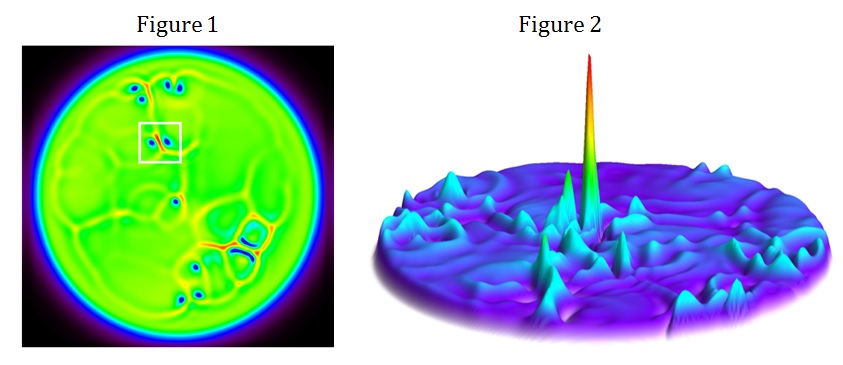Freak waves in an optical bathtub (i.e. Vortices, Turbulence and Rogue Waves in Quantum Optics)
Christopher Gibson, Alison Yao and Gian-Luca Oppo
Rogue waves (RW) are rare massive walls of water that appear suddenly and unpredictably out of nowhere, then disappear in a flash leaving no evidence of their existence other than the devastation of the ships that they destroy. Given the immensity of the ocean and the rarity of these events, the mechanism behind the formation of freak waves – and the ability to predict their appearance – is still something of an enigma. Any model capable of quickly generating, studying and predicting rogue waves could have huge potential benefit by allowing ships to navigate safely through these catastrophic events, thus saving both lives and money.
In a recent Physical Review Letters (Phys. Rev. Lett. 116, 043903, 2016) researchers Christopher J. Gibson, Alison M. Yao and Gian-Luca Oppo of the CNQO group in the Department of Physics have shown that RWs can originate in the transverse area of externally driven lasers and quantum optical devices. Their appearance has been associated with two other familiar concepts in fluids: vortices and turbulence. When the external driving is decreased, optical turbulence sets in and vortices are created and destroyed in pairs (see Figure 1). Close to turbulent and interacting vortices they observe that from time to time the light intensity grows enormously thus leading to RWs (Figure 2).
Given the universality of the model equations, their mechanism should be observable in a large variety of systems in quantum optics such as solid-state and semiconductor lasers, optical parametric oscillators and polariton condensates. Outside optics, this vortex-mediated turbulence should be observed in nematic liquid crystals, chemical reactions, laser plasma interactions and, of course, fluid dynamics. By understanding the mechanism by which rogue waves occur, new methods for the prediction and, in particular, detection of RW precursors (in this case multi-vortex collisions) can be engineered. Moreover, by exploiting the small spatial scales and fast dynamics of optical systems they have produced a new method to create and study RWs in much smaller configurations and over much shorter time scales: freak waves in an optical bathtub!

February 2016